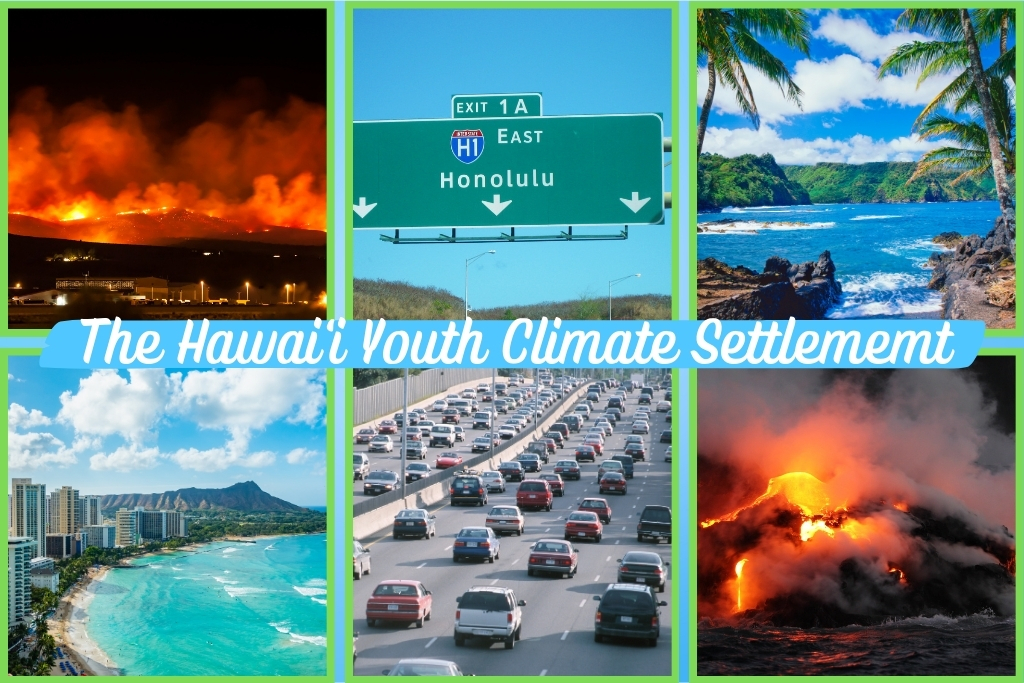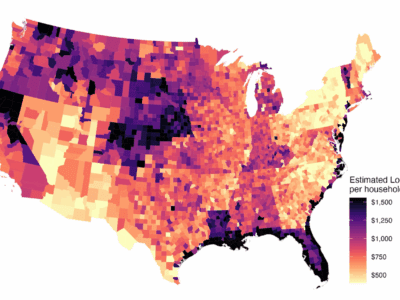The Hawai’i Youth Climate Settlement
Thirteen youth plaintiffs secured a court-enforced agreement to decarbonize the state’s transportation system without even setting foot in a courtroom.

At the precise time on Monday, June 24 when 13 young Hawaiians were set to file into a Honolulu court for the start of trial, they instead gathered at the historic Iolani Palace to celebrate with their legal teams and supporters. Their case, Navahine v. Hawaiʻi Department of Transportation, was the latest youth climate lawsuit in the spotlight, but on the eve of trial the plaintiffs and the governor announced a legal settlement.
Headlines about the settlement have used words like “groundbreaking,” “outstanding,” and “historic” and I think those descriptions are fitting. These young plaintiffs secured a court-enforced agreement by Hawai‘i officials to make good on decarbonizing the state’s transportation system by setting interim benchmarks—all without stepping foot in a courtroom.
“Thank you for this battle,” Gov. Josh Green said in the Thursday afternoon press conference alongside the plaintiffs and their lawyers from Our Children’s Trust and Earthjustice. “You have a constitutional right to fight for life-sustaining climate policy and you have mobilized our people in this case,” he said.
My UCLA Emmett Institute colleague Cara Horowitz and I laid out the various arguments and dynamics of the case in this earlier post. As a reminder, these young plaintiffs alleged that state officials have failed to make progress in reducing the transportation system’s fossil fuel footprint—despite a statewide 2045 carbon neutrality target—breaching their duty to conserve and protect the state’s natural resources.
While the agreement is an important first in climate litigation, that’s not to say it will be easy to enforce.
Here are a few of the most remarkable provisions of the settlement and some uncertainties going forward:
“HDOT will take any actions necessary to achieve the goals established… zero greenhouse gas emissions across all transportation modes within the state, including across all sectors of 1) Ground transportation; 2) sea and air inter island transportation.”
The state agrees to “develop and implement a concrete and comprehensive statewide plan to reduce greenhouse gas emissions from the state transportation system,” completing it in a year or less and then giving youth plaintiffs and the public 30 days to provide input on that plan all with the goal of making good on the state’s existing 2045 carbon neutrality pledge.
“The GHG Reduction Plan will set interim five-year GHG emissions reduction targets in the transportation sector through 2045, for the years 2030, 2035, and 2040. The plan will include different benchmarks for ground, air, and marine transportation to the Hawaiian islands.”
Rather than agreeing to an implementation plan, the state is agreeing to create an implementation plan with firm commitments, though it leaves for another day exactly how stringent those commitments will be. The plan must include interim targets for things like “vehicle miles traveled” and expansion of public transit and targets to “reduce petroleum use. ”
Like many states, Hawai’i has continued to pursue freeway expansions and other fossil fuel-friendly projects despite having ambitious climate goals on the books. What’s less clear from the settlement is exactly how the Transportation Department will reform their normal budgeting and programming processes to align them with those climate goals. One provision says that HDOT will “develop a process and criteria for evaluating, selecting and prioritizing projects…”
Unlike most states, Hawai’i is a place where lots of people travel from island to island by air. So, by including “air inter island transportation,” it’s notable that this agreement puts Hawai’i on track to prioritize electric aviation like no other state.
“To meet the interim targets set in the GHG Reduction Plan, HDOT will need at a minimum: sufficient appropriations by the Legislature…”
This points to the hard road ahead for implementation since the Transportation Department will need increased resources. Politically, this headline-grabbing settlement may provide the governor’s office with some leverage to seek additional funding for implementing the various Transportation Department initiatives. But the text makes clear that the HDOT and the executive branch can’t succeed without the Legislature.
“HDOT will also establish a volunteer youth council to advise on HDOT’s mitigation and adaptation commitments on a quarterly basis with transparency about youth council recommendations and HDOT’s responses.”
This provision, and others, ensures the ongoing opportunity for youth plaintiffs to be involved in the reform of the state’s decarbonization effort.
The settlement also reaffirms that there is a role for the courts in climate change policies. The lawsuit originally sought the appointment of a special master. What the plaintiffs came away with is something different, but perhaps just as strong: court enforcement of this agreement until December 31, 2045, or until Hawaii achieves its zero-emission goal “whichever is earlier.”
To anyone doubting that courts have a role to play in the climate crisis, they can now be directed both to Montana and Hawai‘i.







Reader Comments